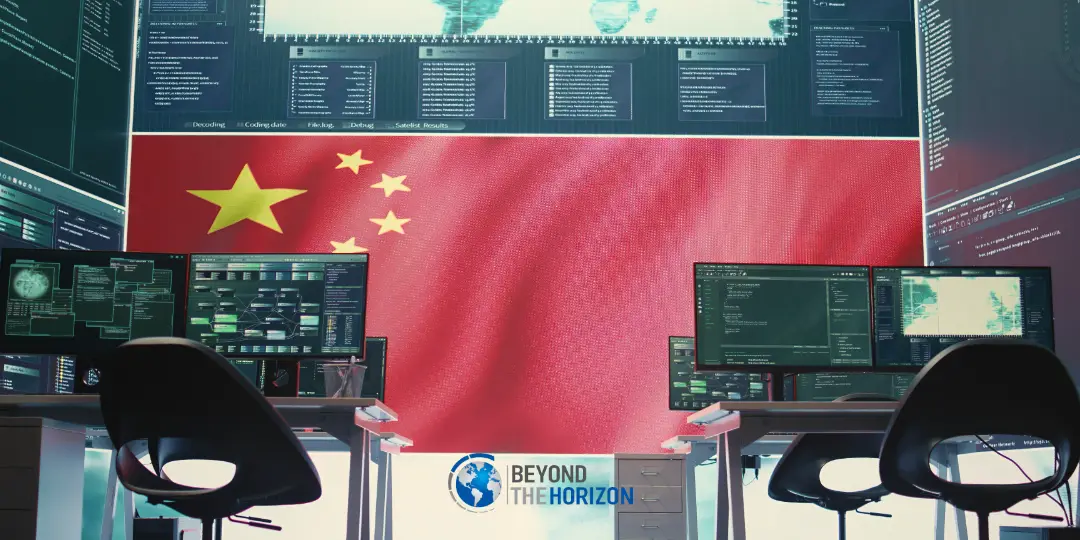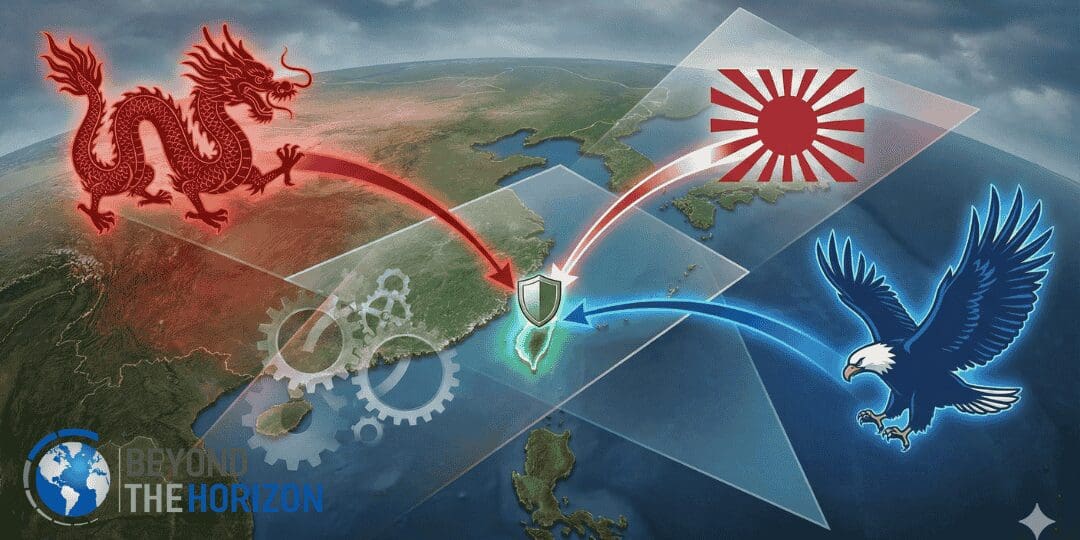Key Takeaways
Unprecedented Military Purge: The expulsion of nine senior PLA generals—including CMC Vice-Chair He Weidong and Rocket Force commander Wang Houbin—marks China’s largest military purge in decades. It demonstrates Xi Jinping’s willingness to sacrifice even trusted allies to reassert control.
Power Consolidation Under Xi: The purge consolidates Xi’s personal authority over the armed forces. By eliminating factional networks and filling top posts with loyalists, Xi ensures the PLA’s political alignment with his leadership as he moves into the latter half of his third term.
Loyalty Over Competence: Official rhetoric of “disloyalty” underscores the shift from professional performance to political reliability as the main criterion for advancement. This approach may tighten Party control but risks stifling initiative and transparency within the ranks.
Rocket Force Instability Raises Strategic Concerns: The removal of consecutive Rocket Force commanders points to deep structural problems in China’s nuclear and missile forces. Questions about corruption and reliability in this branch have regional and global security implications.
Short-Term Disruption, Long-Term Discipline: In the near term, leadership vacuums may slow PLA operations and dampen external assertiveness. Over time, Xi aims to rebuild a more disciplined and centralized force—politically obedient and strategically cohesive.
Regional and Global Impact: While temporary instability may reduce immediate risks of conflict, Xi’s stronger grip could make the PLA more aggressive once restructured. A more centralized command might simplify decision-making but remove internal checks, heightening long-term strategic uncertainty.
Background: Anti-Graft Drive and Purge Triggers
Xi Jinping has made PLA corruption cleanup a priority since coming to power in 2012. Early in his tenure, he purged top generals from prior eras (e.g. CMC Vice-Chairs Xu Caihou and Guo Boxiong) to root out entrenched graft and to remove rivals – reinforcing the Maoist principle that “the Party commands the gun”. However, since 2023 the anti-corruption dragnet has zeroed in on Xi’s own picks in the military, suggesting systemic rot beyond past factions.
A key trigger was the PLA Rocket Force scandal in 2023. The Rocket Force (which manages China’s strategic missiles) saw its commander and other chiefs abruptly removed in mid-2023 amid secretive investigations. This was followed by the disappearance and eventual ouster of Defense Minister Li Shangfu (in 2023–24) and his predecessor General Wei Fenghe – both accused of procurement corruption tied to the Rocket Force and aerospace programs. In fact, officials linked to the Rocket Force have been hit especially hard in the recent drive. The decision to purge Rocket Force leaders came amid rumors of missile program graft undermining capability, and even speculation of security breaches, prompting Xi to act decisively.
By late 2024, the CMC’s Political Work Department (in charge of personnel and ideology) also fell under suspicion, with Admiral Miao Hua (the department’s director) suspended and investigated. Reports in early 2025 indicated that General He Weidong, the CMC Vice-Chair, had not appeared in public since March, fueling talk of an ongoing internal probe. It appears the immediate catalyst for the October 2025 purge was uncovering an “improper network” of patronage and bribery in the PLA’s promotion system. According to analysts, He Weidong, Miao Hua, and their associates formed a clique (many served in the Eastern Theater Command/Fujian area together) that mismanaged personnel appointments, possibly selling promotions or advancing cronies. The Ministry of Defense statement hinted at “serious duty-related crimes” – a euphemism for corruption in the officer promotion process – as a principal reason for the purge.
Thus, while “anti-corruption” is the official banner, the context suggests a combination of motives: Xi addressing military corruption that could weaken war-fighting ability, eliminating any autonomous power networks within the PLA, and sending a powerful warning that loyalty lapses or cliques will not be tolerated. The PLA Daily’s harsh editorial labeling the removed generals “disloyal…[with] a total collapse of their beliefs” underscores that maintaining Party control and Xi’s personal authority over the military was just as much at stake as financial malfeasance.
Key Leadership Removals in October 2025
On October 17, 2025, China’s Ministry of National Defense announced the expulsion of nine senior officers from the Party and military ranks, and the referral of their cases to military prosecutors. This purge is unprecedented in scope during Xi’s rule, removing multiple CMC-level figures in one go. The prominent names and their roles were:
- General He Weidong – CMC Vice-Chairman and Politburo member: The highest-profile casualty, He was effectively the PLA’s No.2 uniformed officer (after CMC Vice-Chair Zhang Youxia) and oversaw operations/personnel. A veteran of the Eastern Theater Command, He, 68, had been fast-tracked by Xi in 2022 to CMC vice-chair without even a Central Committee stint. His purge marks the first removal of a sitting CMC member of this stature since the Cultural Revolution. Notably, He was seen as a longtime associate of Xi (their careers overlapped in Fujian in the 1990s), making his downfall striking. He reportedly played key roles in recent military moves (such as organizing drills around Taiwan in 2022 after Nancy Pelosi’s visit). His expulsion from the Party and CMC indicates no one is immune, not even Xi’s erstwhile confidants.
- Admiral Miao Hua – Former Director of CMC Political Work Department: A Politburo-level naval officer who ran the PLA’s political/ideological apparatus, Miao was already under investigation since late 2024 for “serious discipline violations”. He was suspended from the CMC in mid-2025. Miao had overseen Party loyalty indoctrination and promotions; his case suggests that corruption had seeped into the very department meant to enforce integrity. Alongside Miao, his deputy He Hongjun was also expelled. Their removal signals a purge of the Political Work system, likely for bribery in officer promotions.
- General Wang Houbin – Former Commander of the PLA Rocket Force: Wang was appointed in 2023 to lead the Rocket Force after the previous leadership’s purge, despite being a navy officer by background. His inclusion in the expulsions list is highly significant – it means the newly installed Rocket Force chief himself fell under suspicion within a year. Wang Houbin’s purge implies that the cleanup in the strategic missile force went even deeper or that new wrongdoing was found on his watch. The Rocket Force, which manages nuclear and conventional missiles, has now seen two consecutive commanders (Li Yuchao and Wang) purged, reflecting the gravity of issues in this branch. Such turbulence at the helm of China’s nuclear arsenal is virtually unprecedented.
- General Lin Xiangyang – Former Eastern Theater Command (ETC) Commander: Lin led the ETC (responsible for the Taiwan front) until he was quietly replaced in 2023. His expulsion suggests the anti-graft net caught up to regional commanders as well. Given the ETC’s importance (Taiwan contingencies), his removal raised eyebrows; it may relate to the same Fujian network around He Weidong.
- General Wang Xiubin – Executive Deputy Director, Joint Operations Command Center (JOCC): Wang was a senior officer in the CMC’s JOCC (the nerve center for operational command). Ousting someone in this role indicates potential misconduct in operations planning or simply that he was part of He Weidong’s circle (He oversaw JOCC activities).
- General Qin Shutong – Former Political Commissar of the PLA Army, and Vice Admiral Yuan Huazhi – Former Political Commissar of the PLA Navy: These two political commissars (the top Party officers in the Army and Navy) had already left their posts and now are confirmed expelled. Their inclusion broadens the purge across services, implying corruption was not isolated to one branch.
- General Wang Chunning – Former Commander of the People’s Armed Police (PAP): Wang Chunning had been removed from China’s legislature in September, foreshadowing disciplinary trouble. His expulsion extends Xi’s anti-graft reach into the PAP (paramilitary police), which had also undergone leadership reshuffles.
All nine men have been formally stripped of Party membership and military ranks, and their cases handed to prosecutors. The Defence Ministry statement emphasized that their offenses were “extremely serious nature and egregious impact,” and lauded the expulsions as a significant achievement in the military anti-corruption campaign. In practical terms, eight of the nine also lost their seats on the CCP Central Committee, to be reallocated at the Fourth Plenum starting October 20. This mass clearance allows Xi to promote replacements (likely trusted loyalists or technocrats) into those key Party positions immediately.
It’s worth noting that a PLA Daily editorial described the impact of these generals’ wrongdoing as a “serious blow” to the principle of Party control over the military and to the PLA’s unity. The fact that state media is framing it in terms of loyalty and unity – not just legality – suggests the purge was as much about ideological-political conformity as about financial crimes.
Internal Dynamics: How Xi Gains from the Purge
President Xi Jinping’s latest purge is more than an anti-corruption drive — it’s a calculated effort to tighten his grip over the military. Several internal dynamics reveal how Xi is reshaping the PLA from within.
Eliminating Factional Networks: Investigators found that senior officers, including He Weidong and Miao Hua, had built an “improper personal network” that dominated promotions and appointments. Such cliques pose a direct challenge to Xi’s authority. By removing the entire group, Xi dismantles potential rival power bases and reinforces the message that loyalty must run only to him.
Enforcing Absolute Loyalty: The purge was framed not just as a response to corruption but to “disloyalty.” The PLA Daily accused the ousted generals of “undermining the army’s accountability to the CMC chairman.” Labeling them as “disloyal” or having “lost their chastity as Communists” serves a clear purpose: to justify the purge as moral and ideological cleansing. It also warns others that even perceived disloyalty—or independent patronage networks—will not be tolerated. This reinforces the Chairman Responsibility System, placing all military power squarely under Xi’s command.
Reasserting Party Control: State media described the campaign as proof that “no area is off-limits” and that anti-corruption efforts would be carried “through to the end.” Expelling generals of such senior rank signals that Xi’s discipline drive is absolute. It also reminds Party elites—military and civilian alike—that Xi will enforce purity across the system. This aligns with a broader pattern: the simultaneous ouster of figures like former Foreign Minister Qin Gang underscores Xi’s determination to rule with a clean and loyal inner circle.
Filling the Ranks with Loyalists: The purge creates openings at the top of the military. With multiple CMC and Central Committee seats now vacant, Xi can appoint a new generation of generals who owe their careers directly to him. As analysts note, the CMC had been “half empty” for months, giving Xi a rare chance to rebuild it in his image. Replacing nine senior officers at once is unprecedented—a sweeping reset that ensures personal loyalty and cements his control over the PLA’s command structure.
Paranoia and Risk: Many purged generals were Xi’s own appointees. Their downfall exposes Xi’s deep distrust of even those closest to him. Some observers suggest that Xi views corruption as endemic and believes only his direct oversight can secure loyalty. This mindset fosters a climate of fear that discourages honest reporting and initiative among officers. Xi’s refusal to name a successor and his likely push for a fourth term show that he equates his own survival with the Party’s stability. As one analyst put it, Xi fears that “if he weren’t in power, someone might seek revenge for all those he’s punished.” The PLA’s loyalty has thus become existential for him.
In sum, Xi has transformed this purge into a decisive show of strength. The October 2025 plenum is expected to endorse the expulsions and promote loyal replacements, extending Xi’s dominance into every corner of the armed forces. Yet, the repeated purges also reveal fragility—a system where power depends on fear and constant vigilance rather than trust. While Xi’s control has never been tighter, the PLA’s cohesion and initiative may pay the price.
Geopolitical and Regional Implications
In the short term, China’s sweeping military purge has the PLA looking inward. Leadership gaps—such as at the Rocket Force and Eastern Theater Command—will absorb attention, likely slowing major drills or external operations while new commanders reassert control. Similar to the 2023 Rocket Force purge, Beijing may later stage high-profile exercises or missile tests to signal continuity and readiness.
However, repeated purges risk undermining morale and initiative. Officers wary of political scrutiny may fall into “decision paralysis,” hindering training and operational planning. The Eastern Theater Command’s rapid turnover, for instance, complicates long-term strategy on Taiwan. Yet Xi’s goal remains strengthening the PLA by eradicating graft and ensuring modernization funds are used effectively. Learning from Russia’s struggles in Ukraine, Xi aims to prevent hollow capabilities and ensure commanders’ advice reflects genuine readiness.
The Rocket Force remains the most sensitive concern. Two consecutive commanders have now been purged, hinting at serious internal failings—possibly corruption or security breaches. If missile reliability was compromised, as some reports suggest, China’s nuclear deterrent may have suffered. Xi will likely impose tighter political oversight and appoint trusted loyalists to restore confidence, though this could reduce transparency and heighten mistrust abroad. Still, Beijing will strive to project normalcy through routine patrols and exercises. Some new officers, eager to prove loyalty, may act more aggressively, adding short-term unpredictability even as overall caution prevails.
Regionally, the PLA’s inward focus could temporarily ease tensions, as rivals perceive Beijing as distracted by internal politics. But Xi may counterbalance that impression by amplifying nationalist rhetoric—framing external “threats” from the U.S. or Taiwan to rally unity within the ranks. Such narratives risk raising misperceptions and fueling friction.
For Washington, the purge cuts both ways. A more centralized command might make China’s decision-making more predictable in crises, but it also removes moderating voices, concentrating power entirely in Xi’s hands. Allegations of “foreign infiltration” could further chill military exchanges, with Beijing tightening counterintelligence and resisting renewed dialogue on nuclear risk reduction or crisis management. Given instability in the Rocket Force, the U.S. may press harder for transparency, but China’s leadership is likely to remain guarded until new command structures settle.
Diplomatic engagement may stagnate as officers avoid contact that could be politically risky. The ongoing uncertainty over China’s defense minister post reflects this caution. In the meantime, Taiwan and neighboring countries interpret the purge as both a vulnerability and a warning: the PLA may be less capable now, but far more obedient later. Xi’s consolidation ensures that by the PLA’s centennial in 2027, the military will be loyal, streamlined, and politically unified—better prepared for long-term strategic objectives, including Taiwan.
In the near term, instability could dampen confrontation, but the long-term outcome is a tighter, more disciplined, and ideologically driven PLA. For U.S. and regional planners, that means dealing with a force that is more politically centralized, less transparent, and—once restructured—potentially more decisive.
Conclusion
The October 2025 purge of top Chinese military leaders is a watershed moment in Xi Jinping’s campaign to assert absolute control over the PLA. By decapitating a swath of senior brass on charges of corruption and disloyalty, Xi has reinforced the message that the PLA must be red and expert – politically pure and operationally competent – as China navigates a challenging geopolitical era. In the coming weeks, new commanders and political commissars will be appointed to fill the void. Their mandate will be clear: fix the problems of their predecessors, swear fealty to Xi, and accelerate the PLA’s modernization without the taint of graft.
For policymakers, the implications are twofold. Domestically, Xi emerges stronger in the short term, but the PLA will require careful rebuilding of trust and morale. It will be important to watch for signs of strain within the military: does the purge truly deter corruption and improve professionalism, or do new scandals and stumbles emerge? If promotions are now seen as contingent on political loyalty above all, the risk is a less innovative military culture. Conversely, if Xi’s strict discipline succeeds, the PLA could become a more formidable, unified fighting force by the late 2020s, aligned tightly with Xi’s strategic goals (whether deterring U.S. influence in Asia or reunifying Taiwan).
Externally, China will likely project that this house-cleaning is an internal matter and that its foreign policy and military strategy remain unchanged. But foreign governments should be mindful that Xi now has even fewer institutional checks. The PLA’s highest ranks will be populated by those hand-picked for loyalty. This could streamline decision-making in a crisis – or remove cautionary voices. Engaging China’s military leadership may require cultivating ties with whoever ascends post-purge, many of whom might be less well-known internationally. The U.S. and allies should continue to seek military-to-military communication channels, while recognizing that recent events might make the PLA more insular in the near term.
In summary, China’s latest military purge underscores a pattern of power consolidation under Xi that carries both opportunities and risks. Geopolitically, a cleaner PLA could mean a stronger China on the world stage, but the turmoil of purges can also inject unpredictability into China’s strategic behavior. As Xi rebuilds his military command, the world will be watching to see if this “new” PLA displays heightened discipline and confidence – or if the reverberations of distrust will constrain its effectiveness. For now, Xi has tightened his grip; the policy challenge for other nations will be adapting to a China whose military obeys one man’s orders unquestioningly, even as that man seeks to reshape the regional order to China’s advantage.






